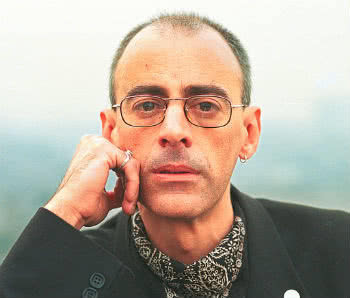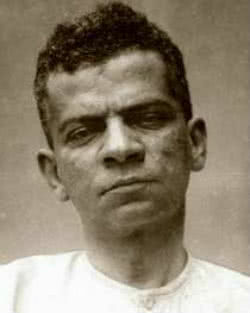Caio Fernando Abreu was a Brazilian writer and journalist, considered one of the greatest short story writers in the country.
Owner of a timeless work, Caio was awarded three times by the “Prêmio Jabuti de Literatura”, the most important literary award in Brazil.
Biography

Caio Fernando Loureiro de Abreu was born in Santiago do Boqueirão, in Rio Grande do Sul, on September 12, 1948. From an early age he already had a penchant for literature.
He moved to Porto Alegre with his family in 1963. Already in his teens he wrote texts and in 1966 he published his short story “the frog prince” in Cláudia magazine. At just 18 years old he wrote his first novel: “White Limit”.
Later, he enrolled in the Literature and Performing Arts courses at the Federal University of Rio Grande do Sul (UFRGS). He didn't finish, as he went to work as a journalist.
In 1968, he moved to Campinas, in the interior of São Paulo, with the writer Hilda Hilst (1930-2004), since he was being persecuted by the Military Dictatorship.
There he worked as a journalist too, but he never left literature aside, his great vocation.
Back in Porto Alegre, he went to work as a journalist for the periodical “Zero Hora”. Shortly thereafter, in 1973, Caio traveled around Europe as a backpacker. A supporter of the counterculture, he lived in several countries: Spain, Holland, England, Sweden and France.
The following year, he returned to Brazil. In 1982, Caio published one of his most emblematic works “moldy strawberries”.
In 1984, Caio was awarded the “Prêmio Jabuti” in the category Tales, Chronicles and Novels with the book “The Triangle of Waters”.
In 1989, he also received the “Jabuti Award” in the same category for his work “Dragons Don't Know Paradise”. Finally, in 1996, he received the same award for the work “Black sheeps”.
Caio discovered that he had the HIV virus in 1994. He publicly declared that he was a carrier of the virus in the newspaper. OState of S. Paul, where he was a columnist.
He died at the age of 47 in Porto Alegre, on February 25, 1996, a victim of complications developed by HIV.
Construction
His work was inspired by writers: Hilda Hilst, Clarice Lispector, Gabriel García Márquez and Júlio Cortázar.
Through a simple, colloquial, fluid, transgressive language and unconventional themes, Caio broke with literary standards.
He was the author of several works (shorts, chronicles, novels, novels, poems, children's literature, plays, letters, literary criticism, etc.), the main ones being:
- White Limit (1970)
- Inventory of the irremediable (1970)
- Black Sheep (1974)
- The Stabbed Egg (1975)
- Stones of Calcutta (1977)
- Moldy Strawberries (1982)
- Triangle of Waters (1983)
- Little Epiphanies (1986)
- The Chickens (1988)
- Honey and Sunflowers (1988)
- The Curse of the Black Valley (1988)
- Dragons Don't Know Paradise (1988)
- Where will Dulce Veiga walk (1990)
Excerpts of Works
To learn more about the language used by Caio, check out two excerpts from his works below:
moldy strawberries
“It rained, it rained, it rained and I was going through the rain to meet him, without an umbrella or anything, I always lost everyone in the bars, I only took a bottle of cognac cockroach tight against my chest, it seems fake said that way, but just like that I was going through the rain, a bottle of brandy in my hand and a pack of wet cigarettes in the pocket. There was a time when I could have taken a taxi, but it wasn't too far, and if I took the taxi I couldn't buy cigarettes or brandy, and I thought hard then that it would be better to arrive wet from the rain, because then we would drink the brandy, it was cold, not so cold, more humidity entering through the cloth of the clothes, through the thin, bumpy sole of the shoes, and we would smoke, we would drink without measure, there would be music, always those hoarse voices, that sax moan and his eye on me, warm shower stretching my muscles.”
Honey and Sunflowers
“As in that story by Cortázar – they met on the seventh or eighth day of tans. Seventh or eighth because it was magical and fair to meet, Libra, Scorpio, right at that point, when the self sees the other. They finally met, on that day when the white of urban skin began to give way to gold, the red was diluted to the few in the gold, so teeth and eyes, green from looking at the endless sea, sparkle like those of cats peering between bushes. Among the bushes, they looked at each other. At that moment when the salt-encrusted skin begins to crave light silks, raw cottons, linens whites, and the contemplation of his own naked body reveals dark spaces of fur where the sun does not penetrated. These spaces glow in the dark, phosphorescent, wishing for other equal spaces in other skins at the same point of mutation. And around the seventh, eighth day of a tan, running your hands over these brown gold surfaces provokes a certain solitary pleasure, even perverse, were it not so gentle, of finding one's own flesh to be splendid..”
Sentences
- “I confess that I need smiles, hugs, chocolates, good movies, patience and things like that.”
- “Because the world, despite being round, has many corners.”
- “I already wanted fate to surprise me. I wanted a lot! Today I just hope he does not let me down.”
- “If some people turn away from you, don't be sad, this is the answer to prayer: "Deliver me from all evil, amen.”
- “Life is all about choices. When you step forward, inevitably something is left behind.”
- “But homosexuality doesn't exist, it never did. There is sexuality - directed towards some object of desire. Which may or may not have the same genitalia, and that's a detail. But it does not determine a greater or lesser degree of morals or integrity.”



